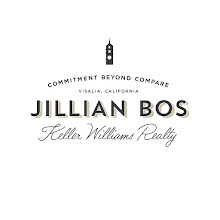The foreclosure crisis leveled off in May as the number of people facing foreclosure was nearly flat from a year ago, according to RealtyTrac, a private foreclosure listing service.
A third fewer people are receiving legal warnings that they could lose their homes. And foreclosures are receding in some of the hardest-hit cities, the report says.
Still, the number of foreclosures remains extraordinarily high. Experts caution that a big reason for the stabilization is that banks are letting delinquent borrowers stay longer in their homes rather than adding to the glut of foreclosed properties on the market. New consumer protection laws, which vary by state, have also meant borrowers can spend more time in their homes.
A new wave of foreclosures could be coming in the second half of the year, especially if the unemployment rate remains high, mortgage-assistance programs fail, and the economy doesn't improve fast enough to lift home sales.
"It's not anything like a recovery yet," says Rick Sharga, a senior vice president at RealtyTrac.
RealtyTrac reported Thursday that nearly 323,000 households, or one in every 400 homes, received a foreclosure-related notice in May. That was up 0.5% from a year earlier and down 3% from April. The report tracks notices for defaults, scheduled home auctions and home repossessions.
But in a sign that the crisis is far from over, the number of homeowners who lost their homes to foreclosure hit a record of nearly 94,000 in May. That number may finally peak next year, as lenders try to work their way through millions of delinquent loans.
Economic woes, such as unemployment or reduced income, are the main catalysts for foreclosures this year. Initially, lax lending standards were the culprit. Now, homeowners with good credit who took out conventional, fixed-rate loans are the fastest growing group of foreclosures.
A record high of more than 10% of homeowners with a mortgage had missed at least one payment as of the end of March, according to the Mortgage Bankers Association. But the number of homeowners just starting to show trouble is trending downward as the economy improves.
"That's a very good thing," said Thomas Lawler, an independent housing economist in Virginia. But he noted that even with that positive trend, "you are highly likely to see an acceleration in the number of actual completed foreclosures."
Lenders are offering to help some homeowners modify their loans. But many borrowers can't qualify or they are falling back into default. The Obama administration's $75 billion foreclosure prevention effort has made only a small dent in the problem.
About 25% of the 1.2 million homeowners who started the program over the past year had received permanent loan modifications as of April. About 23% of those enrolled dropped out during a trial phase that lasts at least three months. Many more are in limbo.
Among states, Nevada posted the highest foreclosure rate in May. One in every 79 households there received a foreclosure notice. However, foreclosures there are down 16% from a year earlier.
Arizona, Florida, California and Michigan were next among states with the highest foreclosure rates. Rounding out the top 10 were Georgia, Idaho, Illinois, Utah and Maryland.
Las Vegas continued to be the city with the nation's highest foreclosure rate, but activity there was down 18% from a year earlier. And nine out of the top 10 cities with the highest foreclosure rates posted annual declines. The exception was the Vallejo-Fairfield area in California, where foreclosures were up 1% from a year ago.
For full story, visit USA Today.





No comments:
Post a Comment